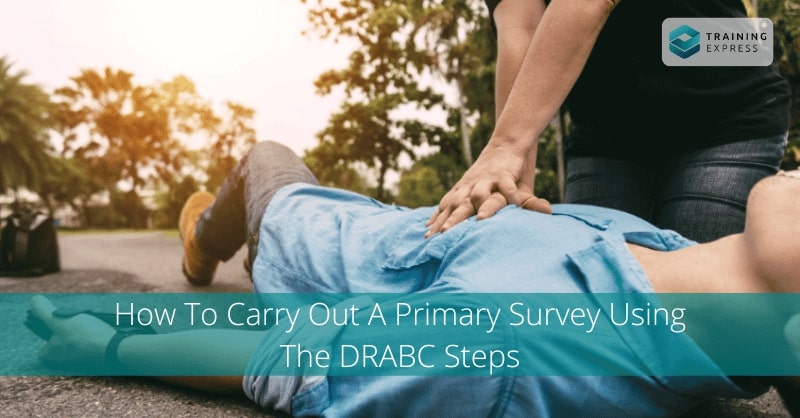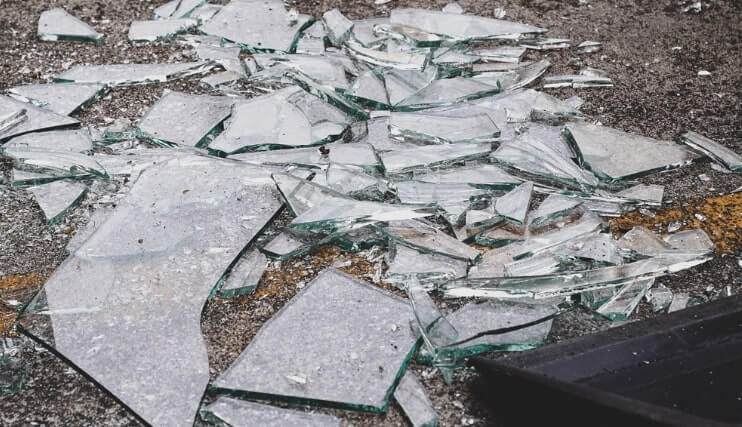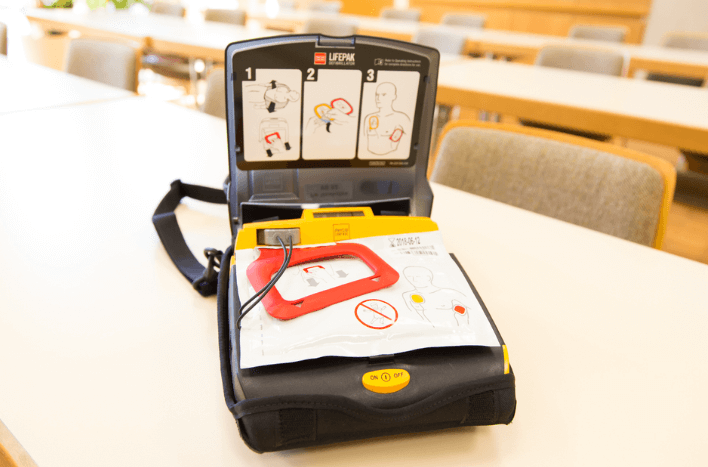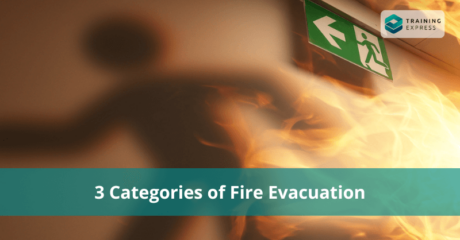

In times of emergencies, your instant action can save someone’s life. But how would you know which is the right step? This is where the Primary Survey DRABC steps come in. The Primary Survey DRABC steps are essential to identify the problem. Along with that, these steps will help you take the proper action to save the person’s life.
If you are unaware of the Primary Survey DRABC, this blog will help you out. Here, you will find the essential information for conducting the primary survey.
Table of Contents
What is the Primary Survey?
The primary survey is the initial assessment of the injured or ill person. It is the process of determining the situation of the patient and any immediate life threats. The primary survey helps to gather the most important information required to provide treatment to the casualty.
The initial stage of a casualty is the most crucial one. If the right treatment is provided without any delay, serious consequences can be avoided. But you can not provide first aid treatment without identifying the problems. That is why you need to conduct a primary assessment. It allows us to understand the issues and help make the right move.
Who Needs a Primary Survey?
A person who just had an accident like a fall, car accident, or fire or has fallen ill is the person who requires a primary survey. In addition, anyone who is in danger or facing a life-threatening situation needs a primary survey, as it helps to examine their conditions and perform first aid accordingly.

When Should the Primary Survey be Used?
Before you can help someone, you first have to identify their problems. You need to comprehend the problem to make your next move. Thus, when you see a casualty, for example, someone injured, bleeding or fallen ill, you should conduct a primary survey.
The primary survey will allow you to assess the severity of the injury or illness. Also, it will help you identify the problems and prioritise them according to their seriousness. Anyone can conduct the initial survey. However, if a qualified first aider is present, it is better to leave things in their hands. For example, when a casualty occurs at home, you may not get any trained first-aider. Therefore, you can conduct the initial assessment by yourself.
What is the Purpose of a Primary Survey?
A primary survey is crucial while dealing with casualties. The purpose of this survey is to identify the illness and injury. It also helps to determine the condition of the patient and the depth of the injury or disease. As a result, the first aider can understand which matter should get the most priority. In addition, it assists them in taking decisions on the next step. For example, you can only tell if the patient requires CPR after the initial assessment.
How to Conduct a Primary Survey?
To conduct the primary survey, you have to follow the DRABC steps. Make sure that you follow them in the right manner. However, just following the steps is not enough while you conduct the survey. Along with them, you should also
- Be quick and calm while evaluating the situation
- Make sure both you and the injured person have no potential for further risk or harm
- Give the injured person courage and comfort
- Get assistance if necessary
What does DRABC Stand for?
You have to follow five steps to conduct the primary survey. These steps are known as DRABC. Here, DRABC stands for Danger, Response, Airways, Breathing and Circulation. It is very important to follow the sequence of DRABC in the preliminary assessment. You will only conduct a successful assessment if you go by the sequence.
Who Can Conduct Primary Survey DRABC Steps?
Anyone who has a clear idea about DRABC can conduct the procedure. But if a person who has first aid training is present, they should conduct the procedure. However, it is not possible to find a trained individual everywhere and looking for one will waste valuable time. Therefore, any bystander who knows about DRABC can conduct the procedure.
What is the DRABC procedure?
DRABC is a fundamental step-by-step procedure used in first aid. This procedure assesses the situation and determines the measures to avoid further issues. In addition, it helps to understand the level of first aid one has to administer.
This procedure includes checking risks, breathing, and airways. Besides, it also covers the step where you look for severe bleeding and the process of reducing the bleeding.
How to Carry Out the Primary Survey Using the DRABC Steps
In order o conduct the primary survey, you must follow five steps. These steps are also known as DRABC and you have to ensure not to miss any steps.
Step 1: Danger
First and foremost, you have to assess the potential danger. Before you step near the injured person, asses the surroundings. When you do that, try to locate risks that can cause you harm. Look around the area, ensure there are no risks, and then aid the injured individuals. Some examples of risks are moving vehicles, fire, smoke, broken glass, live electricity etc.

When you find potential for risk, try to eliminate them before you go near the patient. For instance, if there are moving vehicles, wait for them to clear out. If there is a source of live electricity, try to switch it off and then help the person. After you are entirely sure that you have eliminated the risk factors, only then approach. Don’t put yourself at risk, as it will worsen the situation.
Step 2: Response
After you have determined that it is safe to approach, the next step is to look for a response. In order to assess their condition, you can follow the AVPU scale. AVPU stands for Alert, Voice, Place, Unresponsive.
Alert: Frist, check if the injured or ill person is moving or talking. If not, move to the next step.
Voice: Say something to the person loudly and clearly to see if they respond. When you talk to them, ensure that they can see you. If there is no response, shift to the next step.
Place/ Pain: In this step, put your hand on their collarbone and carefully shake them. You should keep talking to them and look for a response. There is another way to get their response is by invoking a pain stimulus. Pinch the ears or put pressure on fingernails to instigate pain and see if they respond.
Unresponsive: If the casualty did not respond to the previous actions at this point, you can say they are unresponsive
Step 3: Airways
In the third step, you have to check if the airways of the casualty is blocked or not. When the casualty is unresponsive, you should follow these steps
1. Gently tilt their head back and lift their chin. Now conduct a visual inspection for any object that can block the airway.
2. If you see something, try to remove it. However, don’t put your finger inside if you can not see the obstacle.
3. Then move to the next stage of the survey.
When the casualty is responsive, you should do the following
1. Look for obstacles that can block their airways and cause them to choke.
2. Ask them to try to remove the blockage by themselves by using their hands or coughing
3. If they fail to remove the blockage and still choking, you have to step in. In order to remove the obstacle, use abdominal thrust and blows on the back.
4. When they stop choking and can breathe properly, move to the next step
Step 4: Breathing
In the fourth step, your job is to check if the injured person is breathing perfectly. For that, you can observe the chest and see if it is going up and down. If it is rising up and going down, it means the person is breathing. You can also listen to the sound of their nose and mouth to check if they are breathing or try to feel the air coming out of their mouth or nose for 10 seconds. If you find that they are breathing normally, you can move to the next step.
However, if the person is not breathing normally and is unresponsive, call the emergency services immediately. If you are trained in first aid, perform CPR with rescue breaths. But if you are not well-trained, just give hand-only CPR without the rescue breaths.
Step 5: Call 999 / Circulation
The final step is circulation. Move to this step only if the casualty is breathing normally. This step is for checking if the person is bleeding or not.

If the injured person is bleeding severely, your job is to reduce the bleeding. In order to control the bleeding from the wound, apply direct pressure on it. If it is possible, use a clean cloth or sterile dressing. However, if they are not bleeding seriously, you should try to keep them calm and ensure help is on the way.
Put the person in the recovery position if they are not bleeding and breathing normally. The recovery position will keep the airways free and prevent the person from choking if they vomit.
Additional steps
The DRABC is the basic foundation of the primary survey. However, there is an extended version as well, the DR C ABCDEFG. In this method, there are 5 extra steps. These steps are
C for Catastrophic Haemorrhaging
This step comes after checking for a response. This step comes before airways or breathing, as catastrophic bloodless can cause death very fast. Thus, it requires immediate attention.
Step-6: Defibrillator
This is the step where you ask for Automated External Defibrillator or AED to the people around you. This tool is very useful and easy to use. They check if the person is having a cardiac arrest and deliver electric shocks if necessary.

Step-7: Everything else
‘Everything else’ includes three ‘E’s: Evaluate ABCDs, Endocrine blood glucose and Environment. This step is used to avoid further problems.
Step- 8: Flip
If the casualty is breathing properly and in the recovery position, it is suggested to flip their position.
Step-9: Get Help
The final step is to get professional help. However, if the casualty was not breathing normally, you must get help earlier on. When there is no serious danger, take the essential information from the casualty and then seek professional help.
What Should I Do After the Primary Survey DRABC Steps?
When you complete the primary survey, the next step is to conduct a secondary survey. This is also a very important part of first aid. This survey is for identifying any bleeding or fractures. The secondary survey starts from the head and gradually goes down.
What is a Secondary Survey?
The secondary survey will give you information about the injured person and how the casualty occurred. In this stage, you try to communicate with the casualty and find out useful information about the incident. Ask the casualty what happened and how it happened. Also, ask them to describe any pain or symptoms they are experiencing.
Along with that, conduct a thorough physical examination. This is to check if the person has broken bones or swelling. However, if the person is responsive, you must ask their permission before doing the physical examination. If you find anything unusual, like skin discolouration, make notes of them.
If the casualty is not responsive, you conduct the physical examination with due respect and not down your findings. When the professional help arrives, describe your findings to them.
The Primary and Secondary Survey in First Aid
The primary and secondary surveys in first aid play an important role. The primary survey is to identify and treat immediate life threats. When the primary survey is complete, the secondary survey takes place to dig deeper into the scenario.
There are many online and offline courses that provide training on primary and secondary surveys. If you are looking for a top-notch online course, the First Aid course is ideal for you. It will help you develop your expertise in primary and secondary surveys.
FAQ:
DRABC – D
Sometimes, the Defibrillator is considered a separate stage. That’s why in some cases, D is added after the DRABC.
What is DR C ABCDEFG?
The DR C ABCDFG is the extended version of the primary survey DRABC steps. Here, the C after DR stands for Catastrophic haemorrhaging. The D after BC stands for Defibrillator, E is for Everything Else, F is for Flip, and G is for Get Help.
Summary
According to the Red Cross, 59% of deaths caused by injuries can be avoided with first aid treatment! So you can now understand the gravity of first aid treatment. But without the Primary Survey DRABC steps, it’s not possible to recognise the actions required. Therefore, understanding the Primary Survey DRABC steps is essential to ensure proper first aid treatment.


- Available Courses
- Career Bundles72
- Regulated Courses4
- Quality Licence Scheme Endorsed58
- Teaching14
- Teaching & Academics Primary25
- Accounting & Finance Primary24
- Training1
- Design4
- IT & Software39
- Healthcare81
- Marketing28
- Health and Safety340
- Construction41
- Electronics24
- Hospitality21
- Health and Social Care200
- Child Psychology33
- Management344
- Business Skills263
- First Aid66
- Employability255
- Safeguarding60
- Food Hygiene101
- Personal Development1209






0 responses on "How To Carry Out A Primary Survey Using The DRABC Steps"